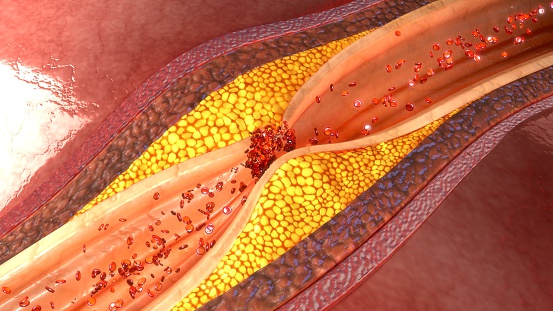
The results of a study show a link between the profile of serum fatty acids (FAs) and early-onset coronary artery disease (EOCAD). The study appeared in Therapeutic Advances in Chronic Disease.
This study, which comprised a total of 128 EOCAD patients and 64 controls, took place in two stages. In the first stage, the investigators assessed the FAs profiles in pooled samples of EOCAD patients using gas chromatography-mass spectrometry. In the second stage, they validated the serum levels of the candidate FAs were validated the patient population.
According to the results, of 49 serum FAs were quantified in pooled samples; three ω-3 FAs were identified to be associated with EOCAD. Moreover, the researchers observed that serum levels of docosahexaenoic acid (DHA) were appreciably lower in EOCAD patients (55.43 ± 33.86 µg/ml) and myocardial infarction (MI) patients (47.49 ± 28.44 μg/ml) compared to the group (70.65 ± 43.56 µg/ml). The researchers noted that multivariate regression analysis showed that elevated serum DHA level was an independent protective factor for EOCAD [odds ratio (OR)=0.8917, 95% confidence interval (CI), 0.879-0.957] and MI (OR=0.835, 95% CI, 0.799-0.862).
The study had some limitations. Firstly, because it was a retrospective case–control study by design, the investigators could not properly assess the cause and effect of serum FAs levels on the dynamic progression of EOCAD. Secondly, most study participants were from coastal areas with a diet rich on seawater fish; meaning serum PUFA levels may have been affected by their diet. Thirdly, the study consisted of only a few female patients with EOCAD. The researchers wrote “studies on larger patient cohorts are warranted to further validate the findings of our study.”
“The study provided the serum FAs profile of EOCAD and confirmed that the decrease in serum levels of DHA, DPA, and EPA was associated with EOCAD,” the researchers concluded.
“These findings might contribute to understanding the cardiovascular effects of FAs, particularly the protective effects of ω-3 polyunsaturated FAs.”







 © 2025 Mashup Media, LLC, a Formedics Property. All Rights Reserved.
© 2025 Mashup Media, LLC, a Formedics Property. All Rights Reserved.